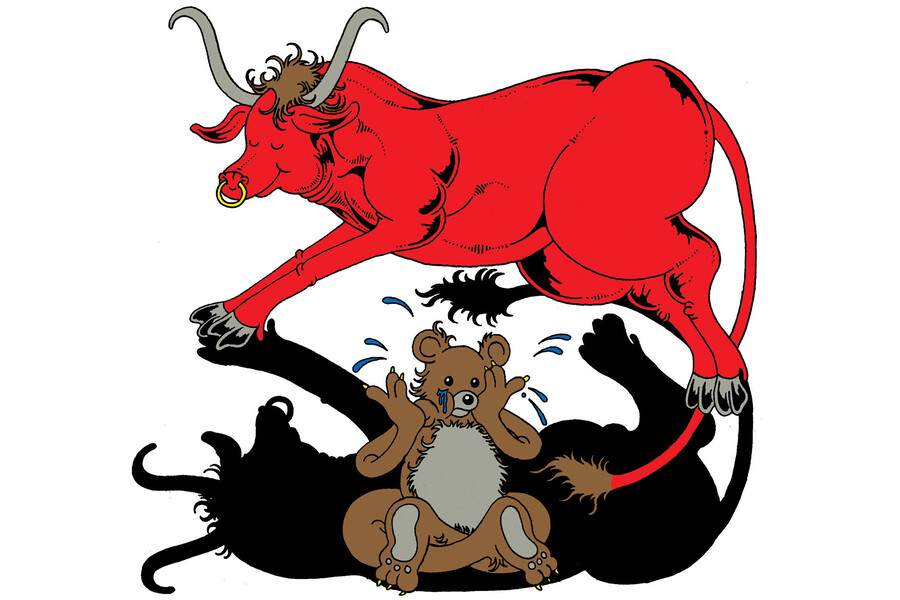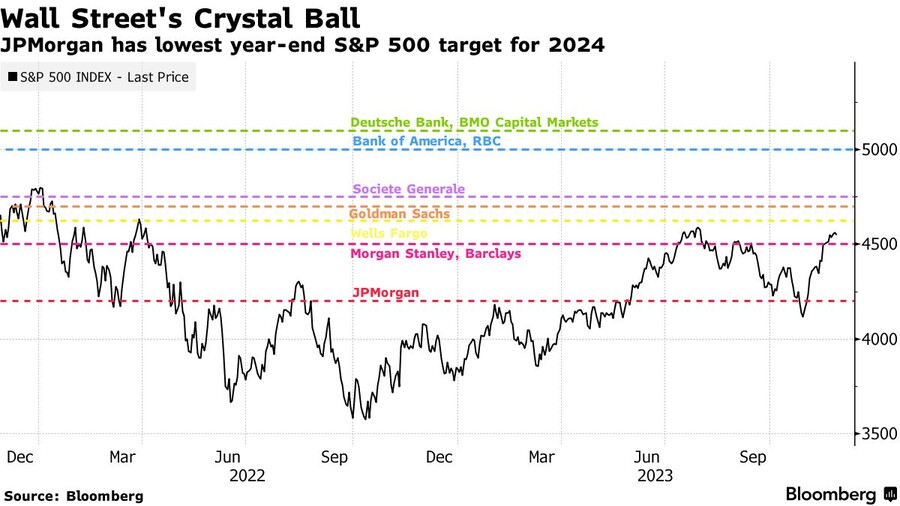-
[경제] (블룸버그) 2023년 증시, 매수 후 보유 전략이 기술적 지표를 압도2023.12.09 PM 07:18
블룸버그 기사 요약 (ChatGPT)
해당 기사는 2023년 주식 시장에서 매수 후 보유 전략이 기술적 지표에 기반한 전략보다 훨씬 더 우수한 성과를 보였다는 점을 강조합니다.
주요 내용:
연준의 기준 금리 인상, 경기 침체 우려, 지정학적 긴장과 같은 불확실성에도 불구하고, 꾸준히 투자하는 '바이앤홀드' 전략이 시장 타이밍을 시도하는 것보다 훨씬 더 좋은 성과를 보였습니다.
14일 상대 강도 지수(RSI) 및 볼린저 밴드와 같은 지표를 포함한 많은 기술적 거래 전략은 올해 매도 시점을 알려주었지만, 이러한 신호를 따르는 것은 단순한 바이앤홀드 전략에 비해 손실로 이어졌습니다.
해당 기사는 기술 지표를 기반으로 시장에서 빠져나간 후 시장이 빠르게 반등하면서 큰 이익을 놓쳤던 투자자들의 사례를 인용합니다. 또한 시장 타이밍을 시도하는 데 따르는 일관된 정확한 예측의 어려움과 잠재적인 손실 위험을 강조합니다.
해당 기사는 기업 수익의 중요성과 주식 시장의 장기 상승 추세를 견인하는 역할을 강조합니다. 때때로 하락세가 있지만, 기업들의 수익 증가 능력으로 인해 시장은 역사적으로 상승 추세를 보였습니다.
결론:
해당 기사는 특히 변동성과 불확실성이 지배하는 올해 시장 타이밍을 위한 기술 지표 사용보다는 인내심 있고 장기적인 투자 접근 방식의 성공을 강조합니다.
===========================================================
(Bloomberg) Stock Faithful Ride $7 Trillion Rally as Market Timing Backfires
■ Buy-and-hold beats all technical tools tracked by Bloomberg
■ Market timers tempted to call top as index hovers near 4,600

By Lu Wang and Emily Graffeo
2023년 12월 9일 오전 6:30 GMT+9
For all the bad things supposedly raining down on Wall Street, it’s shaping up to be a big year for stock bulls who simply sat tight and refused the temptation to outsmart the market.
In fact, buying and holding equities has trounced 22 technical strategies used by traders to navigate their ups and downs. The sit-still plan has paid off handsomely after the S&P 500 touched its 2023 low on Jan. 5 only to climb steadily to its highest point on Friday. (매수 후 보유 전략이 기술 지표 22개를 모두 아웃퍼폼)
In a market riven with Federal Reserve uncertainty, economic anxiety and a host of geopolitical ructions, stocks have reacted with uncanny calm. Going by the distance between the extremes in the S&P 500, this year has a shot of seeing the smallest move since 2017. (여러 가지 우려에도 불구하고 주식 시장은 이상할 정도로 차분한 모습 : S&P 500 지수의 고점과 저점의 격차가 2017년 이래 가장 작았음)
While charting tools are rarely used in isolation, their lousy performance highlights the pain for anyone who heeded selling signals, whether driven by technical or fundamental factors. Amid the Fed’s most aggressive tightening cycle in decades, three quarters of profit contractions and a collapse in multiple regional banks, those who bailed from the market have missed out on a $7 trillion stock rally.
“There was a lot of noise and a lot of reasons to be nervous this past year,” said Dylan Kremer, chief investment officer at Certuity. “But if you’re a long-term investor, sometimes the hardest thing to do is sit on your hands.”

Up 0.2% over five days, the S&P 500 rose for the sixth straight week, the longest advance since 2019. Over the stretch, the pace of gains slowed as the index approached 4,600, a level that thwarted its advance in July. The benchmark gauge ended the week slightly above that threshold.
From big money managers to equity strategists, many came into the year dreading a recession, only to find themselves scrambling to chase the share rally as the economy chugs along. Up 20%, the S&P 500 is more than 500 points ahead of the average year-end target that’s eyed by Wall Street prognosticators back in January. (S&P 500, 월가 평균 전망치 대비 500포인트 높은 수준)
Jamie Cox, managing partner at Harris Financial Group, witnessed first-hand the penalty of timing the market wrong. Back in October, when stocks were on route for the year’s biggest pullback amid a spike in bond yields, one client decided to get out against his advice.
“He probably sold everything in the early part of November,” Cox said. “And then, here three, four weeks later, 15% worse off, he just let it go.” (채권 수익률 급등에 놀라 11월 초에 주식을 모두 매도하여 15% 수익을 놓침)
Time Tested
Despite fresh evidence that staying invested is the ultimate time-tested strategy, caution is creeping back up. Hedge funds sold global stocks last week, according to data complied by Morgan Stanley’s prime brokerage. Goldman Sachs Group Inc.’s Scott Rubner advised clients to add protection against potential losses, while Bank of America Corp.’s Michael Hartnett said equities will suffer in the first quarter.
(주식 시장에 계속 머무는 것이 훌륭한 전략이라는 것이 오랜 세월에 걸쳐 입증됐지만, 여전히 우려의 목소리가 늘어나고 있음)
The bearish case: Valuations look stretched. Corporate America is about to enter the earnings-related blackout on buybacks, depriving bulls of one big ally. While expectations on interest-rate cuts have bolstered shares of late, anxiety is also building that any easing on the sight of an economic downturn doesn’t bode well for risky assets. (비관론의 근거 : 높은 밸류에이션, 실적 발표 예정일 전후 자사주 매입 금지, 경기 침체 우려로 인한 금리 인하는 위험 자산에 나쁜 신호)
And going by charting indicators, the market has run too far, too fast. The S&P 500’s 14-day relative strength index triggered a sell signal in November, the same month when an alarm was flagged by Bollinger Bands. This week, the moving average convergence/divergence indicator — better known as MACD - flashed red, too. (각종 기술적 지표도 과열 신호 신호를 보내고 있음, RSI, 볼린저 밴드, MACD)
Yet for all that, hitting the exit button on chart warnings has not served investors well. One way of looking at this: Bloomberg tracks technical indicators and its back-testing model goes long the S&P 500 when an indicator signals a “buy” and holds it until a “sell” is generated. At that time, the index is sold, a short p-osition is established and kept until a buy is triggered.
As things stand now, seven of the 22 chart-based trading models are losing money this year. All have done worse than the simple buy-and-hold strategy. (그래도 주식 시장을 떠나면 안 되는 이유 : 기술적 지표 22개 가운데 7개는 올해 마이너스 수익률을 기록, 모든 기술적 지표는 매수 후 보유 전략보다 낮은 수익률을 기록)
Another lesson comes from market momentum, showing investors that avoiding stocks for any period of time is risky in a year when pullbacks are followed by violent bounces. Take the S&P 500’s latest round trip. While the index fell into a 10% correction over three months through October, the subsequent recovery was three times faster. That means, missing out on any big up days is costly. (주가 조정 이후 강한 반등이 나왔기 때문에 이 때를 놓치면 수익률이 낮아짐)
In fact, without the top five sessions of 2023, the index’s 20% gain shrinks to 9%. Of course, if one is lucky to dodge the worst five, the return expands to 29%. (올해 가장 많이 올랐던 5 거래일을 놓치면 수익률이 20%에서 9%로 낮아짐, 올해 가장 많이 내렸던 5거래일을 피하면 수익률은 29%로 올라감)
While the stock market retrenches from time to time, it has shown persistent uptrend over the long haul, thanks to corporate America’s ability to expand earnings. Profits among S&P 500 firms returned to positive growth trajectory in the third quarter and are expected to accelerate next year, according to data compiled by Bloomberg Intelligence. (S&P 500 기업 이익 성장률은 3분기부터 플러스로 전환한 후 내년에는 가속할 것)
Against this favorable backdrop, calls are growing louder that the benchmark index will climb to a fresh record by the end of next year.
(이런 우호적인 환경에서, 주가 지수가 내년에 신고가를 기록할 것이라는 전망이 늘어나고 있음)

No wonder Cox at Harris finds himself spending more time convincing people to do nothing than actively trying to be smart.
“Timing the market is one of the most fun things you can try to do because it’s like a dopamine-type behavioral thing,” he said. “If you get it right once, you feel really, really good about yourself and you get it right a couple of times and you feel even more confident. Then you become overconfident, and you miss once, and you destroy all the good that you’ve done.” (시장 타이밍을 맞추려는 시도는 도파민 투자, 몇 번의 성공이 과신으로 이어지고 이로 인해 그 때까지 얻은 성과를 모두 날리게 됨)
user error : Error. B.